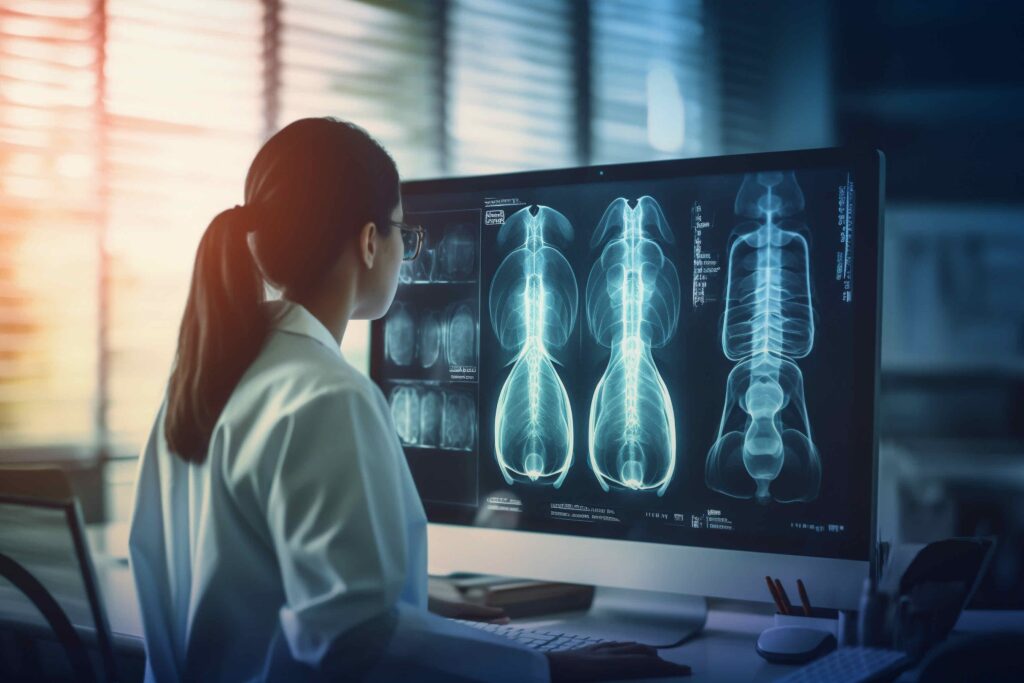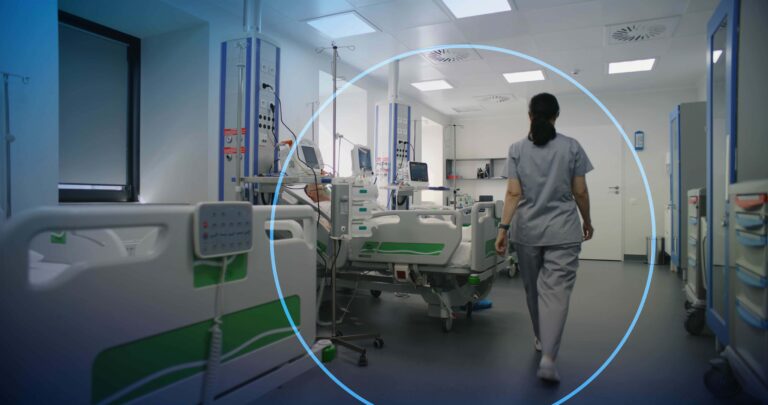Just recently, HBO Max show “The Pitt” won a slew of awards at the Emmys, the annual Hollywood television awards show. In its first season, “The Pitt” thrusts the viewer into a single, 15-hour shift with a team of emergency medicine physicians facing complex issues in a time crunch, highlighting the experiences of brave and brazen doctors saving lives by making lightning-quick decisions. The show’s 15 episodes covered a lot of ground – from cardiac arrest to uncooperative patients to a mass casualty incident. What didn’t make the cut? A story arc that reveals the ways in which healthcare workers are grappling with new, life-saving medical technologies.
Let’s take a look at some of the innovations that didn’t make their way into the hit show’s fictional Pittsburgh Trauma Medical Hospital, but are transforming healthcare in the real world.
Living Heart Project
For some doctors, treatment starts and ends in an office, maybe with a stop in a lab or operating room along the way. For others, it includes a significant amount of time in a virtual space, modeling and simulating patients’ organs and the surgeries to be done on them. That’s the gist of the Living Heart Project, an endeavor that SIMULIA has been leading for more than a decade now. Through simulation technology, cardiac surgeons can build a virtual twin unique to each patient and understand their unique anatomy before a scalpel ever breaks the skin. Accessing this kind of information not only improves the odds of a successful surgery, which in cardiac surgery can mean a difference of life and death, but the patient and their family can see the expected results, even before they happen.
While the main cast of the show doesn’t perform surgeries in the ER, they do, from time to time, send patients to their surgical team for more invasive interventions. In instances like those, having a virtual twin of a patient’s organs in their medical file would enable surgeons to provide the most accurate level of care needed, regardless of the operation. For those going under the knife and for their kin, knowing that those operating on them are as informed as possible might not provide the drama the show is known for, but it would definitely be a win for both technology and medical practitioners alike.

Virtual clinical trials
During the COVID-19 pandemic, Operation Warp Speed was conducted to swiftly produce a vaccine against the virus, moving through the vaccine development and clinical trial phases faster than previously possible. The time between when the project was announced and when clinical trials commenced was just weeks, whereas typical clinical trials take years to even get off the ground.
There’s a solution to this issue that doesn’t need to be precipitated by a global pandemic: virtual clinical trials. By removing the human element from the process and instead relying on synthetic patient data, clinicians and researchers can fail faster, run more experiments, understand complications and effects in a sped-up timeline, reduce capital expenditure by millions and bring better medicines and medical devices to market faster. In 2024, the US Food and Drug Administration (FDA) published the results of a study completed in tandem with Dassault Systèmes that looked specifically at evaluating medical devices tested in clinical trials.
“The Pitt’s” show arc hasn’t yet included a storyline that focuses on the issues that can arise from lengthy, but necessary, clinical trials, but there’s definitely potential, especially if the entire trial can be carried out virtually within a single 15-hour shift.
AI-powered triaging
During one dramatic episode of the show, doctors needed to follow a triaging protocol that required a 10-second turnaround for patients. While that’s outside the norm, quick and efficient triaging can be a difficult task to complete. Though AI hasn’t fully made the leap into healthcare systems just yet, it will. There are already tools, like one developed by researchers at Johns Hopkins University, that empower nurses and doctors to triage using artificial intelligence.
Steve Levine, senior director of Virtual Human Modeling at Dassault Systèmes, has another visionary idea for this kind of tech-first approach. He sees the potential for emergency medical technicians to collect vitals and other data while a patient is in transport on the way to the hospital and generate a virtual twin on the spot, with the information transmitted automatically to the receiving hospital. With this method, ER workers could develop an optimized treatment plan before a patient even arrives on the scene.
“These aren’t sci-fi concepts,” Levine explained. “We already have hospitals using virtual twins to model patient risk and optimize care plans to get it right the first time, often when they only have one shot to do so.” In the ER, as we’ve seen in “The Pitt,” getting that one shot right can be a matter of life and death.
“These innovations,” Levine added, “are powerful tools that are not replacing clinicians but empowering them to do what they do best: save lives.”
This kind of technology can reduce human error that can occur due to the subjective nature of triaging and can uncover health risks in medical files that a patient might forget or not think to mention, but which might be relevant to the status of their care.
Hospital air quality management
We often think of hospitals as being full of sickness yet remarkably clean. A few scenes on “The Pitt” reveal the darker reality of the medical debris that’s often strewn about in ORs and patient rooms. And while most of it is obvious—used gloves, scalpels, and whatnot—some of it is invisible to the human eye.
To combat the risk of airborne viruses, Saint-Louis Hospital in Paris teamed up with Dassault Systèmes to conduct an air flow simulation study. The joint effort looked at how airborne particles traveled through the hospital’s air vents, potentially bringing viruses to immunocompromised patients. By creating a virtual twin of the hospital and its ventilation system, the team was able to pinpoint the imbalances and vulnerabilities in ducts throughout the space. Leveraging virtual twins, SIMULIA computational fluid dynamics simulations and HomeByMe to design accurate virtual renderings of rooms in the hospital, the identified gaps were remedied, and the risk of airborne virus transmission was significantly reduced.
“Clinicians today are under more pressure than ever, and system failures can be devastating,” Levine said. “A virtual twin of the hospital can recreate or anticipate problems in a virtual world and allow a safe and rapid response that works for everyone.”
Maintaining a high degree of cleanliness is paramount in any healthcare setting. Adding a layer of unseen security in the form of near-virus-free air vents and ducts makes hospitals that much safer for patients.
Subjects for season 2
It’s almost hard to imagine how the plot lines of the upcoming second season of “The Pitt” could possibly be more complex than the first. What disasters could strike, and how will unfolding dynamics between characters affect their outcome?
We know well that “The Pitt” takes inspiration from events and trends in the real world. Many patients have unique anatomies and could benefit from virtual models of their organs pre-surgery, so an arc focusing on that issue isn’t out of the question. A plot focusing on how the latest technologies like virtual twins are impacting healthcare isn’t, either. It’s perhaps even more plausible that the show’s writers will highlight the potential for AI usage in staffing, showing how the technology can understand and make predictions about patient admission rates or flow management and allocate resources appropriately.
“We’re entering an era where patients don’t just benefit from innovation behind the scenes; they can see it and feel it. Technologies like virtual patient triage could make care safer, less expensive and more human,” Levine said.
Healthcare makes for good television. It’s complex, dramatic and interesting. But it’s also sometimes reflective of reality. “The Pitt” has staked its place in TV history for highlighting the interactions between real-life events and how the medical field is impacted by them. Those real-life events, however, are rapidly evolving, and the solutions for the challenges they present are becoming increasingly more technological in nature. By weaving these cutting-edge technologies into its storytelling, the series can reflect the real-time evolution of the healthcare industry and the challenges faced by medical professionals. This alignment between fiction and reality not only captivates audiences but also fosters a greater understanding of the complexities within the healthcare landscape, potentially inspiring future advancements and sparking conversations that matter.
As we anticipate season two, the integration of these innovations promises to elevate the drama while highlighting the critical issues in contemporary medicine.

